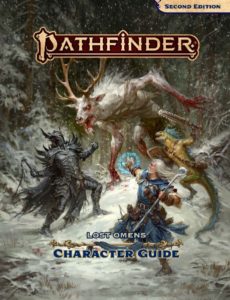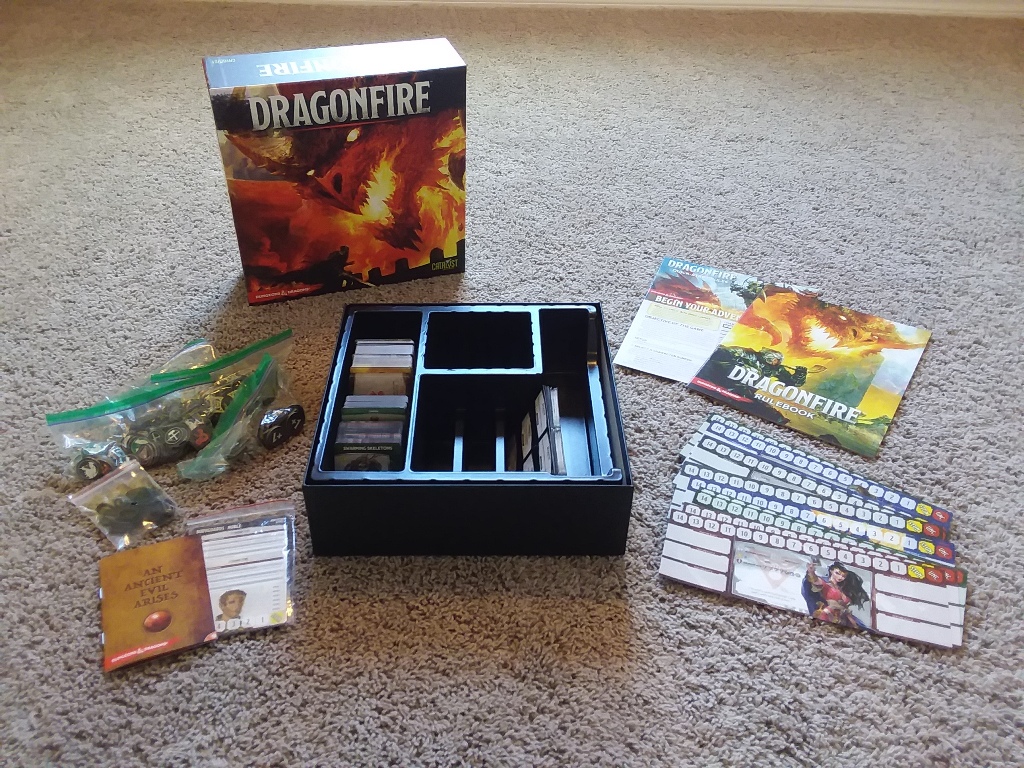
Lost Omens: Character Guide
Lost Omens: Character Guide is a supplement for the epic fantasy Pathfinder, written by John Compton, Sasha Lindley Hall, Amanda Hamon, Mike Kimmel, Luis Loza, Ron Lundeen, Matt Morris, Patchen Mortimer, Andrew Mullen, Mikhail Rekun, Michael Sayre, Owen K.C. Stephens, Isabelle Thorne, and Linda Zayas-Palmer and published by Paizo.
By Aaron T. Huss

Learn more about Lost Omens: Character Guide here
Purchase Lost Omens: Character Guide here (paid link)
Find other Pathfinder posts here
Lost Omens Character Guide is a Pathfinder Second Edition supplement aimed at expanding on your character background options at creation. First it takes the core six ancestries from the core rulebook and offers a number of lineages, which can represent ethnicity, homeland, or culture, and heritages (including half-elf and half-orc). This covers humans, dwarves, elves, gnomes, goblins, and halfling. Next it provides three new ancestries and origins to compliment them – hobgoblins, leshies, and lizardfolk. It then provides a number of organizations for your characters to belong to – Firebrands, Hellknights, Knights of Lastwall, Magaambya, and Pathfinder Society. Finally, it presents a number of NPCs and NPC templates for the GM to use. And of course all of this is supported with new feats throughout.
There is a common thread throughout Pathfinder Second Edition – providing more/improved/accessible mechanics, from the beginning, to make your characters three-dimensional. First Edition had a number of supplements that provided various bits and pieces of information to make this possible, but Second Edition seems to focus on it more and provides those mechanics in fewer locations early on in the development process. The basic concept of ancestry in itself provides the framework for these mechanics. In real life, people cannot be placed into simple buckets of description, and Paizo provides those layers to add dimension to your character. Start with lineage – this is a number of options for each ancestry that provides the look and feel for a character of that ancestry who draws their lineage down a certain path. Think of the difference among people from Scandinavia vs. the Mediterranean vs. Middle East vs. Asia Pacific. Then add a heritage layer which allows you to draw your ancestry to a specific tribe, ancestor, fantastical being, etc. Then add another layer for belonging, this could include organizations (as presented in Character Guide), religion, or even locale. Each of these layers creates subtle changes that add up to an incredible amount of change from one character to another. Why is my human different than yours? Let me describe it in four different layers of description with feats to back that up!
I have always felt that a major weakness of epic fantasy games is differentiating between characters. Besides the standard “race and class”, many games don’t venture further and the player is left creating this all as backstory, which never seems to mean much other than fluff at the beginning. Supplements like Lost Omens Character Guide hand you that information in a nice, tidy package and gives you access to cool feats only your character’s design has access to. Now you can really differentiate from one to another!
Hey GM; don’t feel left out! This supplement has something for you to in the form of NPCs and NPC templates that take all of that previous information and bundles it into characters you can throw right into your game! You can use these to tie-in with the PCs, introduce new locales in a thorough way (by having believable characters from that area), or simply to add dimension to your own NPCs to make them feel like a lot more than just a “race and class/archetype”.
If you are yearning to exploit those new ancestry mechanics in Pathfinder Second Edition, this book is for you! If you don’t care about those kinds of details, then you likely won’t get much out of it.


